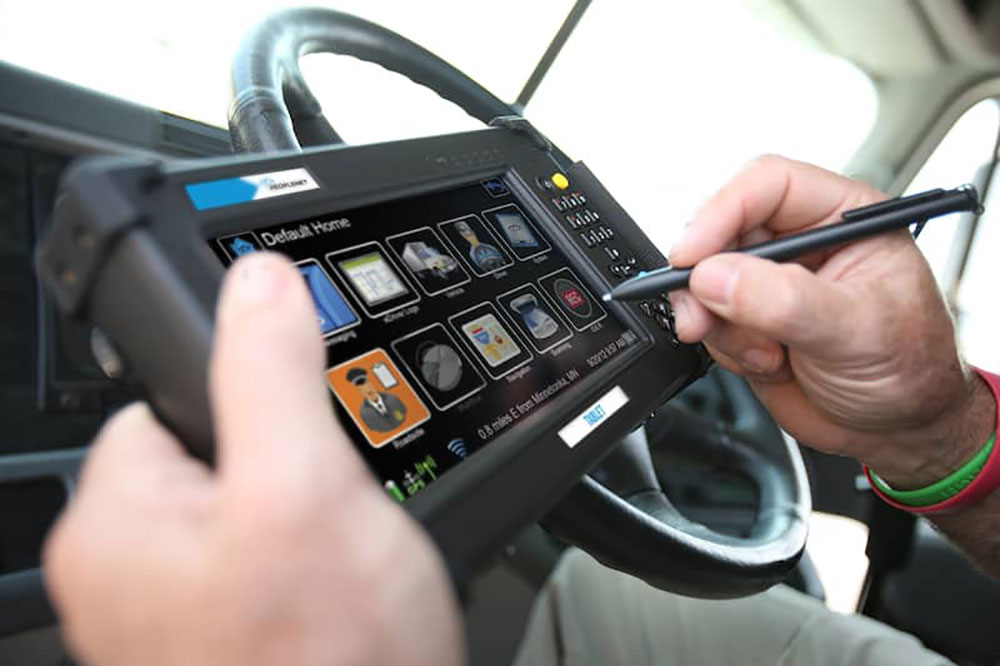After years of push back and legal fighting, United States Congress passed the “Moving Ahead for Progress in the 21st Century” bill, which required the Federal Motor Carrier Safety Administration (FMCSA) to develop a rule demanding trucking fleets to record their Driver’s Record of Duty Status (RODS).
What this all boils down to is that Drivers are no longer allowed to record their Hours of Service on paper logs; logs which were highly susceptible to tampering, the most common kind of HoS violation. The creation of ELDs came from the desire to stamp out these kinds of violations.
ELD stands for Electronic Logging Device and is a relatively new piece of trucking equipment that was created in conjunction with new laws to prevent Drivers from violating Hours of Service (HoS) rules thereby maximizing safety on the road.
ELDs help prevent this sort of log tampering by storing all the data on the ELD itself and with the carrier. Having a mandatory device that can transmit data back and forth inside of a truck seemed to put many Drivers off until it was revealed the data would stay private between the Driver and their carrier.

When were ELD laws enacted?
Final rules were published, and the DOT began an Awareness and Transition Phase in 2015. DOT encouraged fleets to become early adopters of ELDs.
Some carriers were eager to begin outfitting their trucks with devices because it afforded some flexibility with the laws and they could be grandfathered with certain provisions.
Others are still dragging their feet to comply with the laws, looking for exemptions.

How have Drivers reacted to ELD laws?
To say that the trucking industry is divided on its endorsement of ELDs is an understatement at best.
A recent survey from Coretex revealed that 47% of Fleet Operators believe that the ELD mandate is good for the transportation industry.
On the other side of the debate, 38% of Fleet Operators believe the ELD mandate is a negative for the industry citing Driver’s needs to drive faster to complete their jobs and find safe parking.
The remaining 15% of Fleet Operators remain undecided on the new laws.
Many Drivers cite the fact that there is no leeway with an ELD making them feel rushed. Being detained at a shipper for hours on end can ruin a Driver’s paycheck and require dangerous driving to make up for the lost time.
Fortunately, there have been changes made in the law enabling Drivers to go off-duty after the first ten minutes of loading or unloading to maximize a Driver’s HoS.
Regardless of everyone’s feelings about ELDs the facts remain the same: ELDs make Drivers safer.

Why does the Government want people to have one?
Simply put, equipping a truck with an ELD makes hauling freight safer. Trucks equipped with any Electronic Hours-of-Service Recorder (EHSR) had an 11.7% lower crash rate than non-EHSR equipped trucks.
ELD equipped trucks and Drivers have 53% fewer HOS violations than Trucks and Drivers without an ELD, according to that same study.
With these statistics, it made complete sense to begin requiring fleets to furnish their trucks with ELDs.
At this point, it is only a matter of time before ELDs are equipped in every truck and every fleet and every Driver will become an expert in using them.
